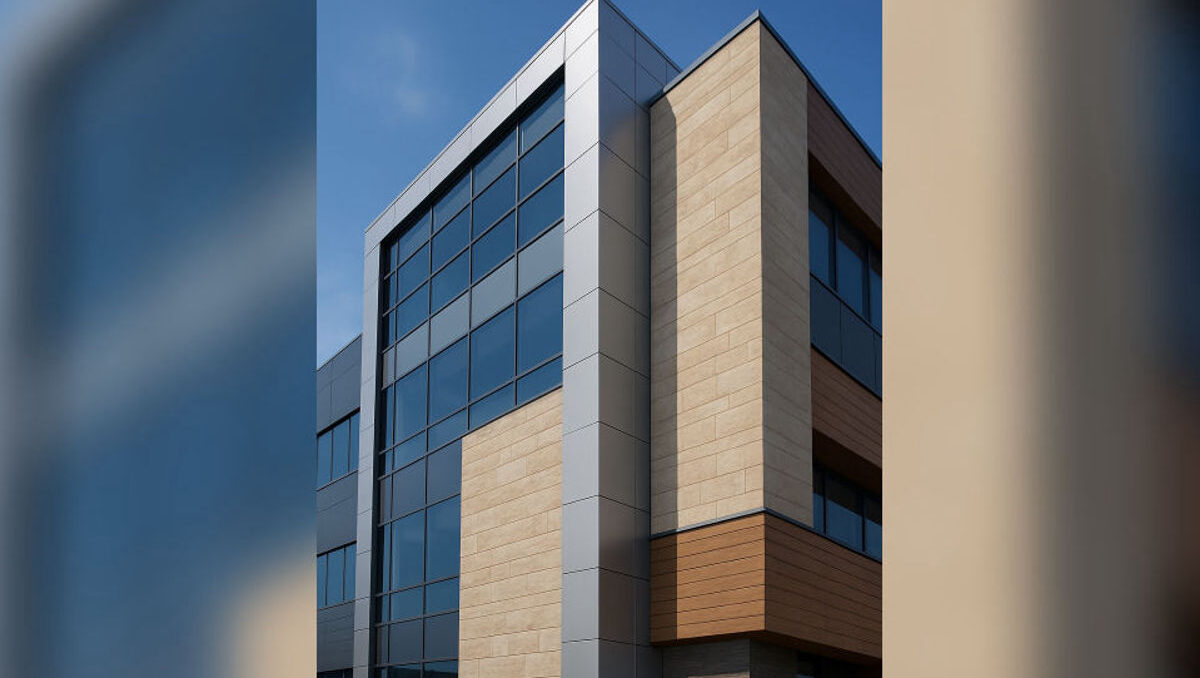Sustainable Facades: Shaping the Future of Architecture

Sustainable Facades In the dynamic world of architecture and design, the concept of sustainability facades has become more than just a trend; it’s a guiding principle shaping the way we build our cities and structures. One of the pivotal elements in this green revolution is the emergence of Sustainable Facades. In 2023, architects and builders are increasingly turning towards innovative solutions to create environmentally friendly and aesthetically pleasing building exteriors. Let’s embark on a journey to explore the fascinating realm of Sustainable Facades and how they are reshaping the landscape of modern architecture.
Understanding Sustainable Facades
Sustainable Facades, often referred to as green or eco-friendly facades, represent a paradigm shift in architectural design. These façades are crafted with the intention of minimizing a building’s environmental impact while maximizing energy efficiency and aesthetic appeal. From energy-efficient materials to greenery-clad exteriors, the scope of sustainable facades is vast and varied.
The Integration of Nature

One of the key features of Sustainable Facades is the seamless integration of nature into the built environment. Green walls and vertical gardens are increasingly becoming popular components of sustainable facades. These living elements not only enhance the visual appeal of a building but also contribute to improved air quality and insulation. The juxtaposition of steel, glass, and lush greenery creates a harmonious blend of modernity and nature.
Energy-Efficient Materials
In the pursuit of sustainability, the choice of materials is paramount. Sustainable Facades often incorporate energy-efficient materials that contribute to reduced energy consumption. High-performance glass, for instance, allows for natural light to permeate the interiors while minimizing heat gain. This dual benefit not only enhances the well-being of occupants but also reduces the reliance on artificial lighting and air conditioning.
Innovative Technologies
The integration of innovative technologies is a hallmark of sustainable facades in 2023. Smart building systems, responsive to environmental conditions, play a crucial role in optimizing energy usage. Automated shading systems, for example, adjust to the angle of the sun, minimizing glare and heat penetration. These technological advancements not only enhance the functionality of the building but also showcase the potential of sustainability in the digital age.

The Economic Advantage
Beyond the environmental and aesthetic considerations, Sustainable Facades offer a compelling economic advantage. The initial investment in sustainable materials and technologies is often offset by long-term savings in energy costs. Governments and businesses are increasingly recognizing the financial benefits of sustainable building practices, further incentivizing the adoption of eco-friendly facades.
Community Well-being
Sustainable Facades extend their impact beyond the immediate building structure. The focus on eco-friendly design contributes to the overall well-being of the community. Reduced energy consumption and improved air quality positively influence the health of residents and workers. In essence, Sustainable Facades are not just a design choice; they are a commitment to creating healthier and more sustainable communities.
Local and Global Regulations
In 2023, the global conversation around climate change has resulted in an increased emphasis on sustainable building practices. Local and global regulations now often include stringent guidelines for energy efficiency and environmental impact in construction projects. Sustainable Facades align seamlessly with these regulations, positioning them as a practical and ethical choice for architects and builders alike.

Architectural Aesthetics
Contrary to the misconception that sustainability compromises aesthetics, Sustainable Facades showcase the marriage of functionality and beauty. The variety of materials, textures, and design possibilities available within the realm of eco-friendly façades allows architects to create visually stunning structures. From sleek, modern designs to more traditional and rustic aesthetics, sustainable facades offer a broad canvas for creative expression.
Challenges and Innovations
While the adoption of Sustainable Facades is on the rise, it’s crucial to acknowledge the challenges that come with implementing new technologies and materials. Cost considerations, availability of sustainable materials, and adapting to local climates are all factors that architects and builders need to navigate. However, these challenges have sparked a wave of innovations, leading to the development of more cost-effective and adaptable sustainable solutions.
A Call to Action
In the context of climate change and environmental conservation, the adoption of Sustainable Facades is more than a design choice; it’s a call to action. Architects, builders, and individuals alike have a role to play in creating a sustainable future. By choosing eco-friendly building practices, we contribute to the collective effort of mitigating the impact of construction on our planet.
As we stand on the brink of a new era in architecture and design, Sustainable Facades emerge as beacons of hope and innovation. In 2023, these eco-friendly exteriors are not just trends; they are the embodiment of a collective responsibility towards a sustainable and resilient future. Through the integration of nature, energy-efficient materials, innovative technologies, and a commitment to community well-being, Sustainable Facades are reshaping our cities and skylines. Let us embrace this transformative journey towards a greener, more sustainable tomorrow.


